Text and photos: Akul Tripathi
So I love road trips. I love the scrub of the rubber on the tar, on the gravel, on the concrete. The way they hold on to each other before their smooth release from an embrace of gravity, like partners in a trapeze act – certain that they will meet in the next swing. For that is their destiny. And those moments of imperceptible caress as you begin to glide, succumbing to the pull of the stars…
…there, in those fragments of time, staring through the window and gazing at worlds that must have been, that could have been and the many that will be; within the minuscule molecules of miles, creation dissipates into a kaleidoscope of possible improbabilities, satiating unspoken and oft unacknowledged desires and greeds levelling into an equilibrium of soul energy across existence.
Travel nirvana? Yes, that is what road trips are about…
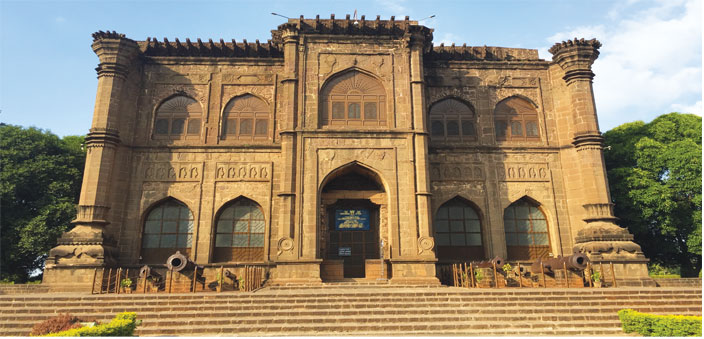
A gem of a city
But watch out. The ecstasy of hurtling through thoughts and visions; while addictive and disarming, can cause losses unpardonable. Sure, the inviting roads of Karnataka would be a partner in crime to the ages that reduced a metropolis to a blip on the map. For the glassy unblinking stares of dreamy eyes can skip over wormholes of history, of incredible stories that are the bevelled embroidery on a cultural fabric which within its intricate weaves conceals and thus saves from certain extinction, memories of a time when the Deccan flowered with all the nobility that Delhi or Agra’s cultural delight could offer and more. Where a potpourri of cultures and the beginning of traditions were not just salutations or footnotes, but truth unfolding in real time.
An imperial capital, a gem embraced in the folds of volcanic magma, born to reflect the fire trapped in its rock, polished through epochs to a retina wrecking shine that blinded the ones who had seen the best the world had to offer. It scorched paths of blazing glory for a couple of centuries and then was condemned back to an ashy existence.
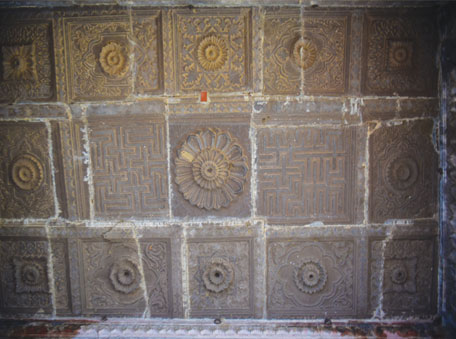
Five hundred thirty kilometres from Bangalore, glimpses dance between stark condominiums and tin roofed settlements with the occasional sore thumbs attempting to imitate a glory long gone. There materialise monuments that should be mirages. For they have no place in the today. For they belong to a time when this soil was revered as Bijapur. When imagination bordering on magic cut and polished the basalt into a basin in which poured the seekers of the world. The meek, the sleek and the geeks without concern to any lines that may divide, put their back and buck together and raised on their mortal shoulders an edifice to eternity. A city of their dreams. A city, the more of which you know, seems like it could only have been a dream. A city that you cannot today understand or know completely…
The twilight hours
The infant days of what we today know as Bijapur begin with its founding by the Western Chalukyas (also known as the Chalukyas of Kalyani) in the 10th and 11th centuries. Some attest to older inhabitations which is probable, but Bijapur as a city of importance in the political sphere of the subcontinent, emerges at this time. Though, at this juncture, it was known as Vijaypura (City of Victory). After the decline of the Chalukyas, the city changed hands to the Yadavas in the 12th century. The 13th century saw the Sultans of Delhi turning southward and looking to gain a foothold in the Deccan and beyond. The tyrant Alauddin Khilji through his commander Malik Kafur spread their influence on Vijaypura and they held sway on it till they were ousted and the Tughlaqs took control of Delhi. In the series of political instability that is characteristic of medieval India, Zafar Khan, who served under Muhammad bin Tughlaq, revolted and set up his own kingdom in 1347 which came to be known as the Bahamani Kingdom, and Zafar Khan became Ala-ud-din Bahaman Shah, the founder of the Bahamni Sultanate with its capital at Gulbarga. For nearly almost another century and a half, Vijaypura was just another satellite town revolving around Gulbarga and then Bidar, when it became the Bahamani capital.
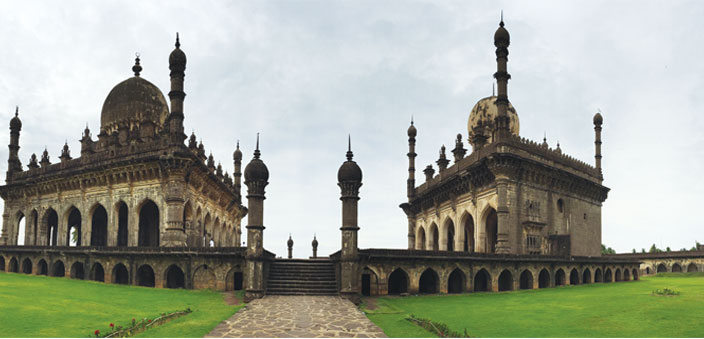
The generally accepted notion is one so oft-heard in the workings of kingdoms that sprouted in the middle ages where slaves earned favour and became commanders, who then took over their once masters. In line with this narrative, many believe Yusuf to be a Georgian slave purchased by Mahmud Gawan – the celebrated prime minister of the Bahamani Empire and under whose tutelage the extremely able slave, by his talents and great war skills, became the king’s favourite. Initially he was adopted as master of horse, later promoted to Hawaldar of Bidar, before being made Governor of Bijapur in 1481.
The other, a more sensation telling claims him to be a son of the Ottoman Sultan Murad II who had to flee modern day Turkey as his brother had come to power and would kill all other claimants to the throne. Yusuf, hence, travelled to the Deccan and joined the army of the Bahamani Kingdom. Both stories agree on his progression through skill to become the Governor and then King of Bijapur.
Yusuf waged several wars with his neighbours – the powerful Vijaynagar Kingdom to the south and even his Muslim neighbour from which he had seceded. In his rule from 1490 to 1510, he set up a small but virile kingdom with a citadel he had built in his days as governor at its centre. He also built the Farroukh Mahal (also called Chini Mahal – perhaps from the Chinese ceramic said to have been used as tiles) of which remains a lofty durbar hall and a series of rooms as its wings. Despite all the lavishness and grandeur that was to follow, the sheer size of this edifice lets it hold its own in a city where super-sized would soon become the norm.
Besides formally establishing the kingdom, the most important decision of Yusuf would be to marry Punji – the sister of a Maratha warrior. This one act would be the seed that would ensure the longevity of his nascent empire and its astonishing multi-cultural aspect as a confluence of cultures of the Deccan. The wisdom in his choice of life partner became evident immediately on his death when Punji Khatun, as she would be formally addressed, came to the rescue of his empire.
Yusuf died in 1510 in a way that befitted the founder of a kingdom – at war with Vijaynagar where he is believed to have been struck down by several arrows. At this juncture, his son Ismail was still a boy and the affairs of the state were managed by the minister Kamal Khan who imprisoned the young king and tried a coup. Punji Khatun hatched a counter plot and Kamal Khan was stabbed to death in the royal palace. After his death, Kamal’s son Ismail Khan is believed to have marched to the palace to avenge his father and the whispers speak of how Punji in male attire valiantly defended the palace from a coup to grab the throne by Kamal Khan’s son. Ismail Adil Shah thus became the ruler of Bijapur and succeeded his father’s ambition.
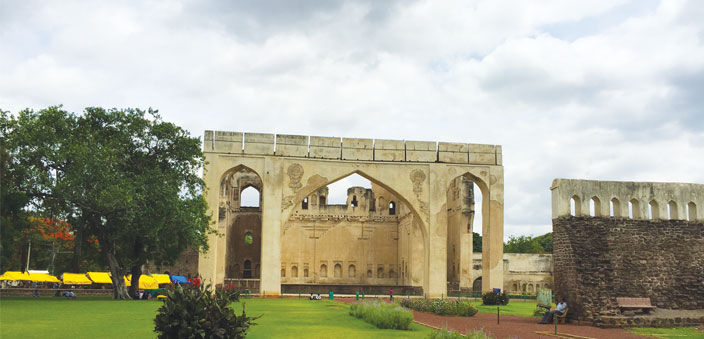
Mallu, in very common knowledge, was an ineffectual ruler and in the company of evil habits. Knowing that the future of the dynasty was at stake, Punji Khatun once again came to the rescue of Bijapur, and with the help of her son the late emperor Ismail’s trusted general, Asad Khan, deposed Mallu and had his younger brother Ibrahim Adil Shah I crowned as king.
Ibrahim Adil Shah I deviated from the traditions of his predecessors and introduced many innovations in the political and religious policies. Being a devout Sunni, he discontinued his father’s Shia practices and reintroduced the Sunni practices. During his time, the Marathas and the habshis found high place in his court so much so that, public accounts were also maintained in Marathi. Like his father, Ibrahim’s reign was also for 24 years and a few months. However, unlike his father, Ibrahim’s constant warring did not extend the states boundaries by much. Ibrahim cannot claim any significant additions to the kingdom he inherited except for some territory on the western coast of India and Bijapur now extended till south of Goa. Ibrahim Adil Shah, however became the first ruler of his family to use the title of Shah while his father and grandfather had used the Khan title.
A new dawn
After his death in 1558, his son Ali Adil Shah took over the reins of the Bijapur administration. Continuing the seesawing tradition in the family, on the day of his coronation, Ali Adil Shah reversed several diktats of his father and also, once again, brought back the Shia faith as the state religion. While the start was not one to indicate greatness, the golden period of Bijapur can be said to begin during the reign of Ali Adil Shah.
Bijapur, despite its many successes, was a small kingdom and always at risk of being run over by someone of power. Money too, was limited given the constant warring and campaigns that were the way of life for the first three Sultans, without any windfall gains to have occurred. Spends were primarily on defence installations and upgrading of the army as this was necessary for Bijapur to survive. Ali Adil Shah perhaps understood the divide and rule strategy of Vijaynagar and played the game better than any other ruler of the time.
On one hand, he established very close ties with Vijaynagar and even visited the capital city of Vijaynagar. On the other hand, he was instrumental in creating the successful confederacy of the Deccan Sultanates against Vijaynagar that led to a resounding victory for the Sultanates in the famous battle of Talikota in 1565. Besides the extension of the Bijapur kingdom to the south, right up to the city of Vijaynagar, it brought a significant portion of the wealth of a ridiculously prosperous empire into the coffers of the Bijapur State. This victory is undoubtedly the greatest achievement of his rule and the greatest military achievement in the history of Bijapur – perhaps the reason behind the flowering of Bijapur itself. For along with the victory came riches and with the money, the desire to build not just a city, but a capital that would be the envy of the world.
Ali launched into this activity with great vigour and Gagan Mahal or Heavenly Palace was built by Ali Adil Shah I in 1561 as a royal palace with a durbar hall. It has three impressive arches and the central arch is the widest. The durbar hall was located in the ground floor while the first floor was built as the private residence of the royal family. Most of the building is now in ruins, but the grand arches give an easy idea of the opulence that must once have resided here.
With the defeat of Vijaynagar, came refugees in thousands. To ensure adequate water supply for them, he commissioned the building of the Chand bawdi – a large well that could quench the thirst of the ones seeking shelter. Chand bawdi is perhaps named after another commendable decision of his – marriage to the famous woman warrior Chand Bibi of the Ahmednagar Nizamshahi clan. Not only did it bring close familial relations with another Deccan Sultanate, but like Punji Khatun before her, Chand Bibi too would be pivotal in ensuring that the Adil Shahi dynasty did indeed survive to see its golden age.
The fort and the citadel built by his great grandfather and founder of the dynasty Yusuf were further strengthened. The circumferential length of the fort’s outer wall which enclosed the old city, measured 10 km. It was strongly fortified with the most massive materials with ninety-six large bastions of various designs. In the days when Bijapur Sultanate commanded almost the whole of the Deccan territory, the strongly fortified fort had more than a thousand canons made of brass and iron. While many cannons still lie around Bijapur, the most famous one, if not the largest pieces of artillery ever made – is the Malik-e-Maidan cannon – the monarch of the plains. Many consider it the largest mounted cannon ever forged. Made of bell metal – an alloy of copper, iron and tin, its creation is credited to a Turkish engineer Mohammed Bin Hassan Rumi in the year 1549 AD. Because of the alloy, the gun surface is relatively clean and has no rust. It is believed to have been used in the Battle of Talikota from where it got its name. The cannon is four feet long, measuring 1.5 meters in diameter and weighs 55 tonnes. The nozzle is cast in the shape of a lion’s head with its fangs bared open and the head of an elephant between them. It is also observed that the cannon remains cool even in strong sunlight and when it is tapped it tinkles like a bell. Around the touch hole is the inscription of its maker. However, the original pivot and carriage are missing. It is placed on a burj (tower) on the northern wall of the fort and is one of the major attractions of Bijapur where a peculiar belief exists that touching the cannon and making a wish would make it come true!
It was in his reign that relations with the Mughal emperor Akbar were established and envoys exchanged. Ali Adil Shah had no son of his own. So, in 1579 he appointed his nephew Ibrahim, son of his brother Tahamasif, as his successor. Ibrahim was to become the most successful king of Bijapur and preside over an age that would see Bijapur become the honeypot that attracted bees from the world over. But, not without a healthy dose of drama.
If ever there was any question regarding the importance of queens in an empire, one need look no further than Bijapur. In a history that is almost exclusively dominated by men, the queens of Bijapur in at least two instances saved the dynasty from being cut short. The very year Ali Adil Shah proclaimed his heir, he was assassinated by a eunuch. Ibrahim was installed on the throne as Ibrahim Adil Shah II. However, Ibrahim was still a boy of only nine years. His aunt, the wife of Ali Adil Shah – Chand Bibi – stepped into the foray where various forces through the office of the regent were attempting to usurp the throne. Through clever associations, calling upon old loyalties and great personal bravery, Chand Bibi saved the throne twice and then had herself installed as regent to the boy king whose name would become synonymous with Bijapur.
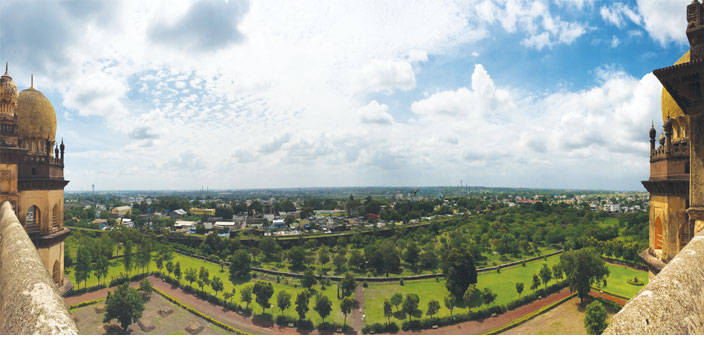
And the sun shines…
The dynasty in ascendency reached its zenith in the age of Ibrahim Adil Shah, the second of his name but unparalleled in his family for vision, foresight and cementing together the best the fate and the trials of his ancestors had laid in his lap. He was undoubtedly Bijapur’s greatest Shah who reigned from 1580 to his death in 1627. The greatest of Bijapur’s monuments were built during his reign. However, what he is remembered for the most, his greatest contribution to Bijapur and the fabric of the Deccan was his wholehearted devotion towards fostering communal harmony across religions and sects. His policies and measures aimed at reconciling rifts between the Shia and the Sunnis of Islam and of both with the Hindus and his personality was the personification of the values he held dear.
He patronised artistes like no other Deccani ruler, and the cultural flowering that was already under way by the crisscrossing of cultures and the additional influx of skilled artists and artisans from Vijaynagar, found means and resources to blossom into the city that came to be known as the Palmyra of the Deccan after the famed ancient oasis in the desert of present day Syria. Bijapur became as much a cultural melting pot as Akbar’s Agra. The art form of the mushaira was born in his court and migrated to Agra.
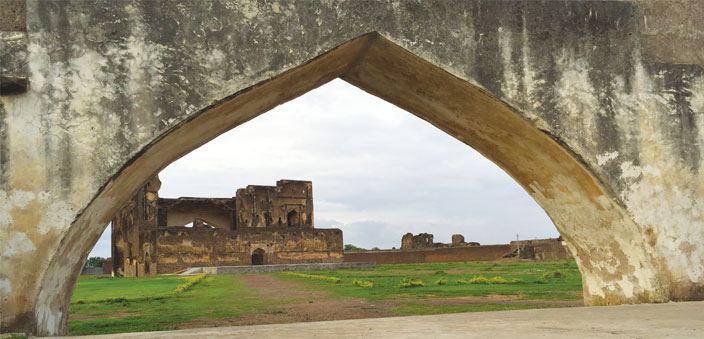
The Shah saw music as the synthesis that would unite his people and give form to his cherished ideals that would see Bijapur transcend definitions of capital into a veritable paradise. Much like Akbar, he too visualised a culture that was a fusion of all that existed in the land to unite the people in peace. In the north, Akbar built Fatehpur Sikri and tried to give a firm footing to his ideal of Din-e-ilahi, and in the Deccan, to give further impetus to his idea of a musical city, Ibrahim founded the musical city of Navraspur – the abode of the nine rasas. The township, a nine-gated pleasure capital built three kilometres from Bijapur city was built to invoke navrasi in all its philosophic and artistic meanings. At its centre was the Sangeet Mahal – a two-storey hall designed for musical performances, which lies in ruins today.
Ibrahim’s daughter was married to Daniyal – son of Emperor Akbar, that cemented a strong link between the two kingdoms and the peace further encouraged prosperity. Ibrahim came to be known as Jagadguru Badshah while he still lived, and left behind a trail of multi-ethnic culture and tales of resourceful leadership, whose design remains can be seen in what was once his capital city. The very quiddity of his philosophy is reflected in what is a marvel of architecture with no compare in history of India – his tomb – the Ibrahim Rauza (Rauza means tomb) – a complex with the tomb, a mosque, water tank built on a raised plinth. It is Deccan’s Taj, though it was built years before Shah Jahan constructed the Taj. Perhaps, the name emerged as he too had it constructed for his wife, but got interred there himself. Unlike the Taj with its sophistication of clean lines and visible restraint, the Ibrahim Rauza is a riot of bulbous finials. It is decorated with clusters of false minarets interspersed with true minarets and is covered with calligraphic decoration of Qur’anic verse, Persian poetry and pious injunctions. While Islamic architecture has traditionally revelled in the use of geometric designs, the Ibrahim Rauza borrows heavily from the Hindu style of using objects of natures such as leaves, veils and flowers in its decoration.
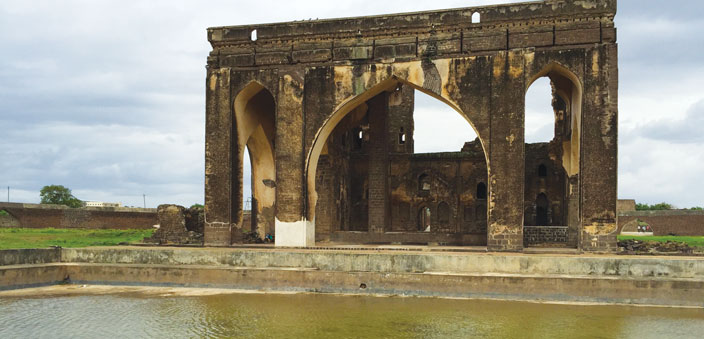
The shadows lengthen
The seeds sown by Ibrahim Adil Shah II continued to bear fruit during the reign of his son Muhammad Adil Shah who ascended the throne on the death of his father in 1627. To be fair to him, the sixteen-year-old lad who would rule for 30 years carried forward the egalitarian society his father had envisaged and devoted his life towards. Continuing, also, in his father’s diplomatic missions, Muhammad had great relations with the Mughal Emperor Shah Jahan. In partnership with the Mughals, the Sultanate of Ahmednagar was brought to an end and a peace treaty was signed with the Muhgals that assured independence for Bijapur through a royal Mughal firman. Shah Jahan also formally recognised Muhammad as ‘Shah’ – the only Bijapur ruler to receive such arecognition from the Mughals.
The Mughals were the preeminent rulers of the subcontinent and the peace with them assured a long term of life without aggression and prosperity for the dwellers of Bijapur. This extension of peace saw arts and culture flourish further where Muhammad became the first Adil Shahi ruler to depart from the Islamic injunctions against figure and portrait painting, and he introduced frescoes and portraits which can be seen at the Asar Mahal – the hall of justice built by Muhammad Adil Shah which would also house hairs from the Prophet’s beard. Traces of paintings and stucco work are also visible at the Saat-Manzil – a part of a mansion that remains and is now a five-storeyed dilapidated building.
Muhammad’s military achievements are a mixed bag though and it is in this one can see the beginning of the decline of Bijapur. His reign also saw the emergence of the Maratha warrior Shivaji, whose initial Hindu State was carved out of Bijapur – a start that would have grave consequences for Bijapur very soon. The larger-than-life monuments and edifices which had become the hallmark of Bijapur architecture reached its zenith in the reign of Muhammad Adil Shah and is best evident in the tomb he constructed for himself – the picture postcard of Bijapur and an unquestionable entry in the list of monuments of Incredible India – the Gol Gumbaz.
Ingeniously built on a bedrock that would prevent shifting and tilting, the Gol Gumbaz is an intricately planned, a meticulously executed and elegantly finished monument of epic proportions and monstrous dimensions. With a dome that many reckon is the second largest in the world (after the St. Peter’s Basilica in Rome), it is a tomb that announces its presence to visitors to the city 10 kms before they see Bijapur. Although considered to be simple of design and remarkably virile and austere as opposed to the much more feminine finishes of the Ibrahim Rauza, it is widely regarded as the structural triumph of Deccan architecture. Within the same complex is also the Naqarra House that would once hold the drums that would welcome important visitors to the city and today is an excellent museum housing some of the best that Bijapur had to offer.
Eight intersecting arches created by two rotated squares that create interlocking pendentives support the dome. At each of the four corners of the cube, is a dome-capped octagonal tower seven stories high with a staircase inside. The upper floor of each opens on to a round gallery which surrounds the dome. Running around the inside of the dome is the “Whispering Gallery”, where even the softest sound can be heard on the other side of the mausoleum due to the acoustics of the space. It is an apt homage for the last great ruler of Bijapur who presided over its most prosperous time. From such dizzying heights of the Gol Gumbaz, things would only go downhill.
There must be dusk
After Muhammad’s death in 1656, his son Ali Adil Shah II, a boy of 18 ascended the throne. This transition of a young, untested and weak ruler was the opportunity for the terrors growing in the dark during the reign of Mohammad to gain control over Bijapur. Bijapur was a rich fruit, ripe for the taking. In a few generations, it had become the envy of the world and an envy that the Mughal prince Aurangzeb would want to possess at any cost.
Besides the constant internal politics of gaining power, the Muhgals too were looking for a reason to invade Bijapur and under the pretext of the legitimacy of Ali’s parents, Aurangzeb pleaded for an attack that was approved by Shah Jahan. Simultaneously, an increasingly boisterous Shivaji was consistently taking territory away from Bijapur. It was his reign that saw the famous encounter of his general Afzal Khan with Shivaji at Pratapgadh which provided Shivaji with the means and resources to set up an empire as large as any seen in the subcontinent.
The Shivaji-Afzal Khan face-off, though, caused the creation of a tragic legend in Bijapur and a ‘dark tourist spot’. Popular narrative holds that Afzal Khan was a superstitious man and relied heavily on the predictions of a Brahmin astrologer. Though he had shouldered the responsibility of subduing the ‘mountain rat’ Shivaji, he was tentative as the astrologer had predicted that Afzal Khan would never come back to Bijapur if he attempted to fight Shivaji. Afzal Khan is also portrayed as a jealous and possessive man who could not bear the thought that in case he never came back, his wives and quite substantial harem – a total of 64 women – would be with other men. Hence, he called them to a spot a little away from the city and drowned them in a well. One of the women, however, managed to run away. The other 63 were not so lucky and are buried near the well, at a place known today as ‘Saath Kabar’ (60 graves).
To be fair to him, Ali II ascended at a time which required a more experienced ruler. The tides were coming in too rapidly and from all directions. He was fighting on several fronts simultaneously against powers and motives that were in no mood for deals, negotiations or any half-measures. They were looking to go in for the kill – to possess the golden egg laying hen that was Bijapur. Through his 16 years reign, he repulsed the Mughals thrice, but lost territory each time. Similarly, territory was lost to Shivaji, and on his death in 1672 when he was buried at an incomplete ambitious tomb called Bara Kaman, Bijapur was already a pale shadow of what it was in his father’s time.
An eternal night
In a line of young boys having to take the throne, Sikandar Adil Shah was a mere infant of four when his father died and his reign was one of changing regents and conspiracies and civil war like situations between warring nobles. It was only a matter of time before the Mughals would drive in the final nail. The process took longer than one might imagine and through all kinds of tactics, alliances – including one with Sambhaji, son of Shivaji – Bijapur held on to its independence for 14 long years when finally in 1685, Emperor Aurangzeb personally marched to the Deccan to fulfill his life’s ambition.

On September 12, 1686, Bijapur was occupied and integrated into the Mughal Empire. In the Gagan Mahal built by his ancestors, a young Sikandar was brought bound in silver chains and he bowed thrice to Aurangzeb before being taken away to Daulatabad – a Mughal stronghold where he died in captivity.
Happily ever after
Colonel Philip Meadows Taylor, an Englishman in the service of the ruler of nearby Hyderabad in an 1866 publication, eloquently describes Bijapur as, “Palaces, arches, tombs, cisterns, gateways, minarets, … all carved from the rich basalt rock of the locality, garlanded by creepers, broken and disjointed by peepul trees, each in its turn is a gem of art and the whole a treasury.”
The story of Bijapur runs like a fable. Like Arabian Nights, impossible seeming situations are the ingredients of which it is brewed, flavoured by the spices of wisdom that enlivened Panchatantra and the seasonings of wit that is resplendent in Aesop’s Fables. Bijapur, the city might not have survived for an ever after. Indeed, it has been renamed to the original Vijaypura in 2014.
However, the Bijapur of Col. Taylor’s experience, of Ibrahim II’s vision and Muhammad’s grandeur, the one where the domes of Bijapur offer a canopy of possibilities and a chance to experience paradise, that fable that is Bijapur, will live happily ever after…

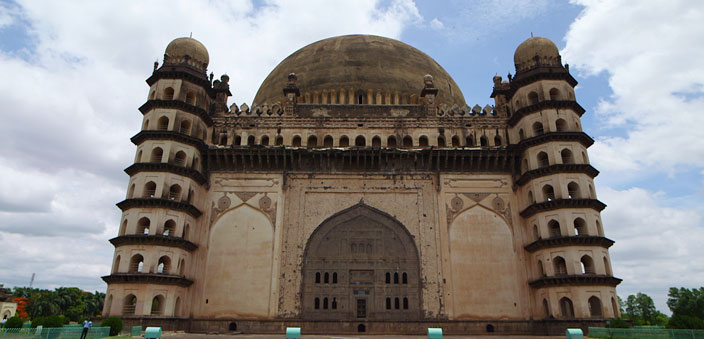
 [/column]
[/column]